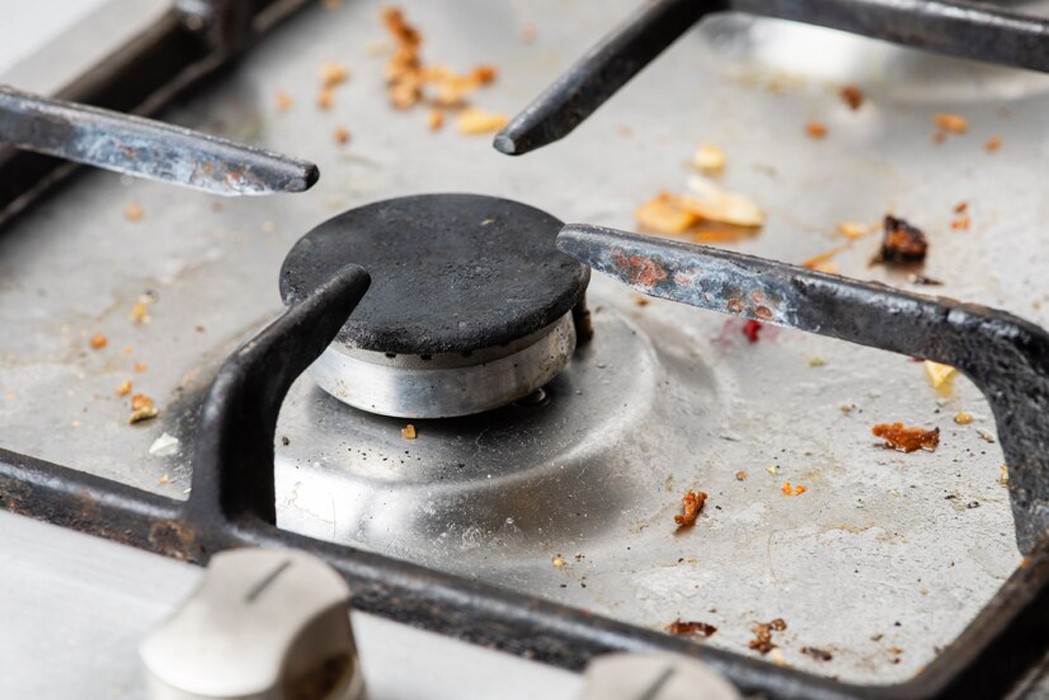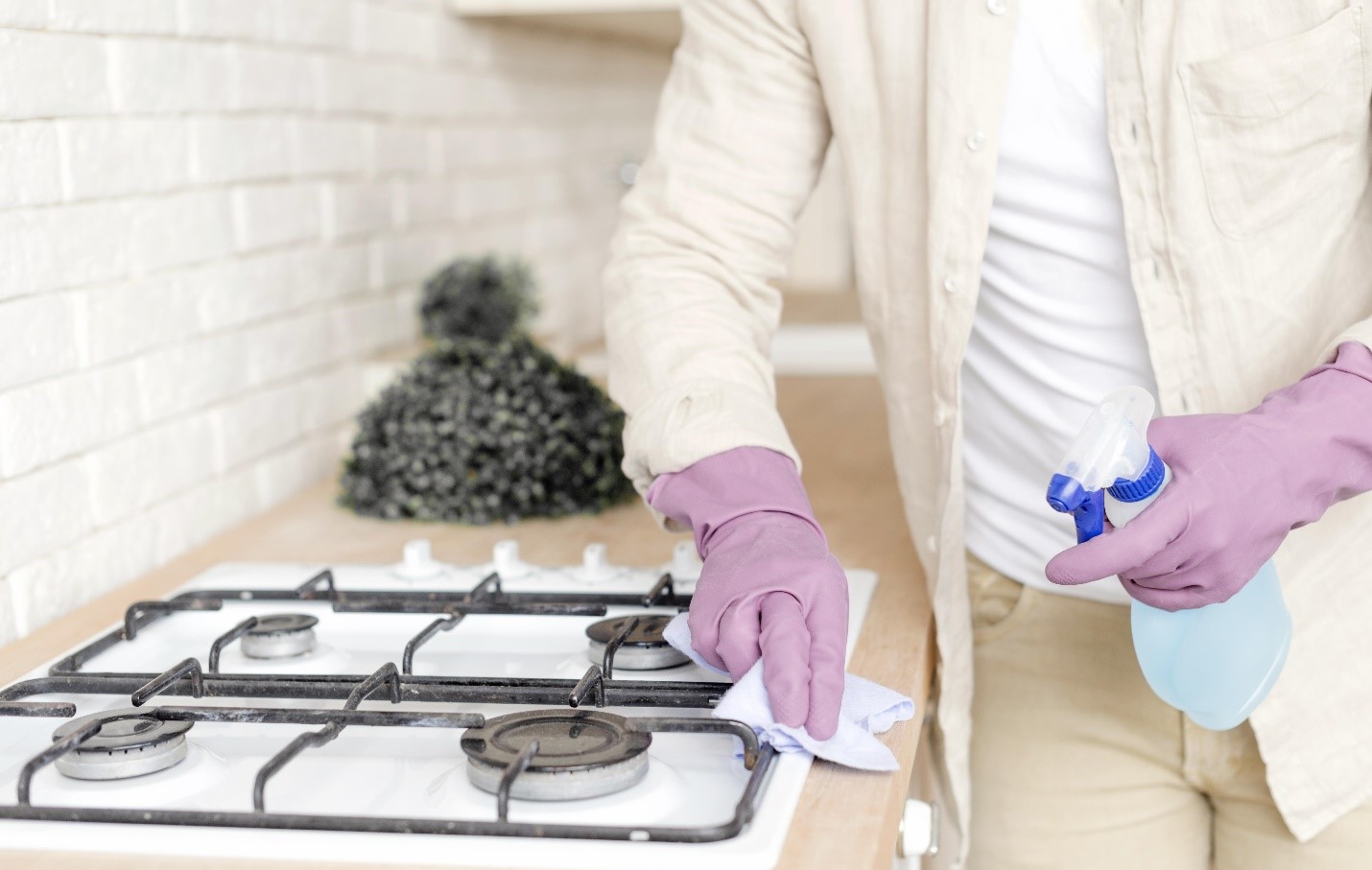10 professional tricks for maintaining restaurant multi-burner gas stoves
A multi-burner gas stove is the most important tool in a kitchen, and it is practically impossible to serve and cook food without a gas stove.
A multi-burner gas stove, like other kitchen equipment, needs weekly care and cleaning so that it has a longer life and also doubles the pleasure of cooking for us.
Cleaning and maintaining a multi-burner stove is very important, because the stove is in direct contact with the food being cooked.
Therefore, in order to extend the life, improve performance, safety, and hygiene, cleaning and maintenance of the multi-burner gas stove is necessary and important. In this article, we are going to discuss tips and tricks that increase the life and performance of multi-burner gas stoves.

Daily cleaning of the multi-burner gas stove
Daily cleaning of the multi-burner gas stove is a necessary and vital act in managing a kitchen. This operation not only helps to improve the performance of the gas stove, but also ensures the safety of the users and the health of the cooked food. A multi-burner gas stove, despite its many features, needs special care and attention to perform at its best throughout its lifetime.

In this part of the article, from adjusting the flames to the precise cleaning of the pipes, we have examined them separately and provided practical advice to ensure better performance and greater safety.
Draining and washing under the flames
Draining and washing under the flames is one of the vital steps in the daily cleaning of a multi-burner gas stove. This step is especially important because under the flames is usually where residue, oils, and dirt particles collect. Carrying out this process with accuracy and the correct method not only helps to improve the performance of the gas stove, but it is also very important from the point of view of health.
Complete evacuation of flames
Before starting the cleaning operation, make sure that the gas stove is turned off and cooled down. Then completely exhaust the flames.
Evacuation of contaminated particles
Using a brush or other suitable tool, carefully drain particles, oils, or contaminated residue from under the flames. This step is a prerequisite to start washing more accurately.
Draining and washing under the flames, as one of the important care measures, helps the gas stove to work better and also guarantees healthy and delicious food in terms of hygiene.
Cleaning the external surface of the gas stove
Cleaning the external surface of the multi-burner gas stove is another vital step in the daily cleaning of this cooking device. The external surface of the gas stove, as a point of direct contact with the hands of the users as well as with materials and drinks, needs careful and regular cleaning. In the following, we will explain the steps of cleaning the external surface of the gas stove.
● Evacuation and power cut
First, make sure the stove is turned off and unplugged.
●Evacuation of removable parts
Parts that are easily removed (such as flame wicks, grills, and burner plates) should be removed from the stove and moved to the drain.
Cleaning the external surface of the gas stove is a point that adds to the beauty and hygiene of your kitchen and takes care of the life and efficiency of this device. This important step depends on the accuracy and use of appropriate solutions and tools.
Maintenance and troubleshooting of multi-burner gas stove
Maintenance and troubleshooting are important aspects in the care and productivity of a multi-burner gas stove. These steps will not only help the performance and stability of the stove, they will also help prevent accidents and users. In the following, we will discuss the steps of gas stove maintenance and troubleshooting.
Daily review
By performing a daily inspection, detect signs of any malfunction or defect in the gas stove. Use switches, buttons, and indicators carefully.
Inspection of pipes and fittings
Check the gas pipes and fittings carefully. Make sure there are no deposits and all connections are properly tightened.
Check the flames
Be aware that the flames are functioning properly and that each one is burning evenly and without problems.
Troubleshooting if needed
If you detect any malfunctions or problems, for example, the flames are uneven or the switches do not work, proceed with troubleshooting. You may need to replace or repair some components.
Check and adjust flames
If the flames burn unevenly or unevenly, check their adjustment. Make sure the flames burn evenly and without problems.
Continuous maintenance and troubleshooting helps to increase the life and productivity of the gas stove and also helps to reduce the risks and accidents related to the use of this device.
Safety and accident prevention of multi-burner stoves
Safety and accident prevention are very important when using a multi-burner gas stove. Improper use or defects in safety may lead to serious accidents. In the following, we examine the important steps of safety and accident prevention in the use of a multi-burner gas stove:
Inspection of pipes and fittings
The purpose of this inspection is to ensure the health of gas pipes and connections. Any gas leak can be dangerous. If there is a leak, stop using and repair immediately.
Maintenance of the space around
Make sure there are no flammable or combustible materials near the stove. Also, make sure there are no tools or objects that could catch fire nearby.
Use of the safety system
Most modern gas stoves have safety systems. Make sure these systems are working properly and that the gas will automatically shut off if there is vibration or the flames go out.
Training for users
All persons using gas stoves must receive safety training. These trainings should include how to relieve anxiety, how to properly use a gas stove, and the necessary reactions in the face of any accident.
Safety and prevention of accidents is a vital point in the care of a multi-burner gas stove. These steps allow users to use this device safely and without worry.
Training employees on the correct use
Training employees on the correct use of multi-burner gas stoves is one of the critical measures to increase kitchen safety and productivity. These trainings can help prevent accidents and technical failures and give employees the assurance of safe and optimal use of gas stoves. In the following, important points that should be considered in training employees are given:
Getting to know how to turn on and off
Employees must carefully learn how to turn the stove on and off. Also, how to use the switches and buttons to control the flames should be explained to them.
A tutorial on adjusting the flames
Employees should know how to adjust the flames optimally and according to the type of food and cooking. Also, explanations should be given about the use of different flames at the same time.
Training on safety in the face of gas leaks
Employees should be aware of gas leaks and the correct behavior in the event of a leak. This includes shutting off the gas and notifying safety officials.
Training on the safe use of cooking equipment
Employees should be familiar with the correct use of cooking equipment that comes with the gas stove. This includes tips such as placing the plates in the right place and using the right utensils for cooking.
The appearance and hygiene of the multi-burner gas stove
The appearance and hygiene of a multi-burner gas stove is a fundamental point in maintaining hygiene standards and creating a healthy and optimal kitchen environment.
Cleanliness of stove top
The stove top should be cleaned after each use. Use detergent solutions and wash the surface of the screen with a soft cloth or sponge.
Cleaning buttons and switches
Buttons and control switches should also have precise control periods and control panels. Use the built-in software tool to clean the buttons.
Pipes, pipes and fittings
Gas pipes and fittings may have areas for collection and particulate matter. Carefully and using the right tools, clean these parts as well.
Use of coatings and protectors
Use stove covers and protectors to prevent contamination and stains. In addition to cleanliness, these items add a beautiful and pleasant appearance to your kitchen.
Training employees about personal hygiene
Employees should pay attention to personal hygiene tips. Use gloves, protective hats, and appropriate clothing when working with the stove.
Related articles:
Common mistakes in grill maintenance